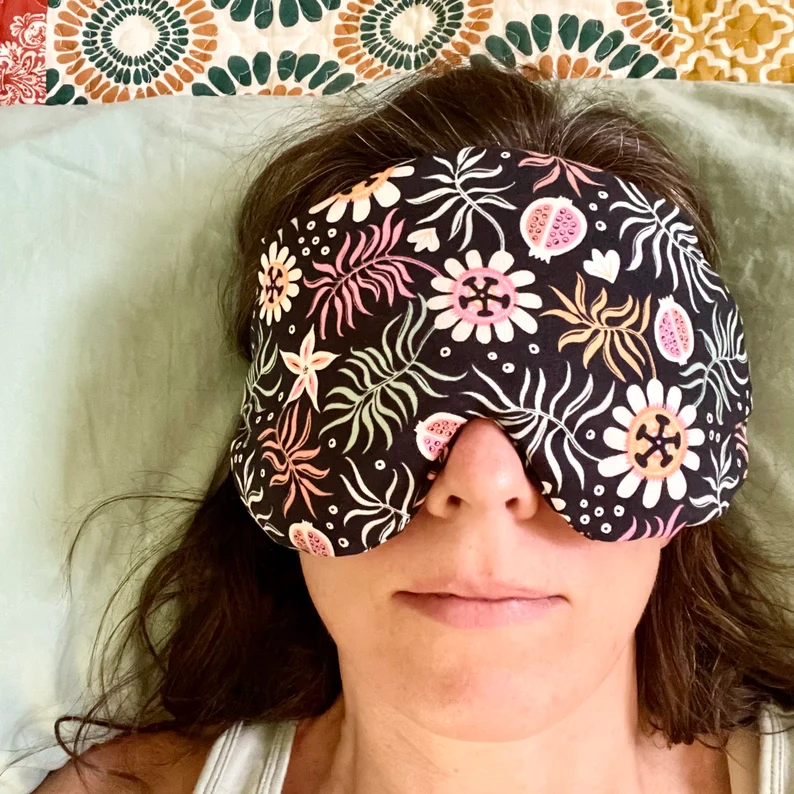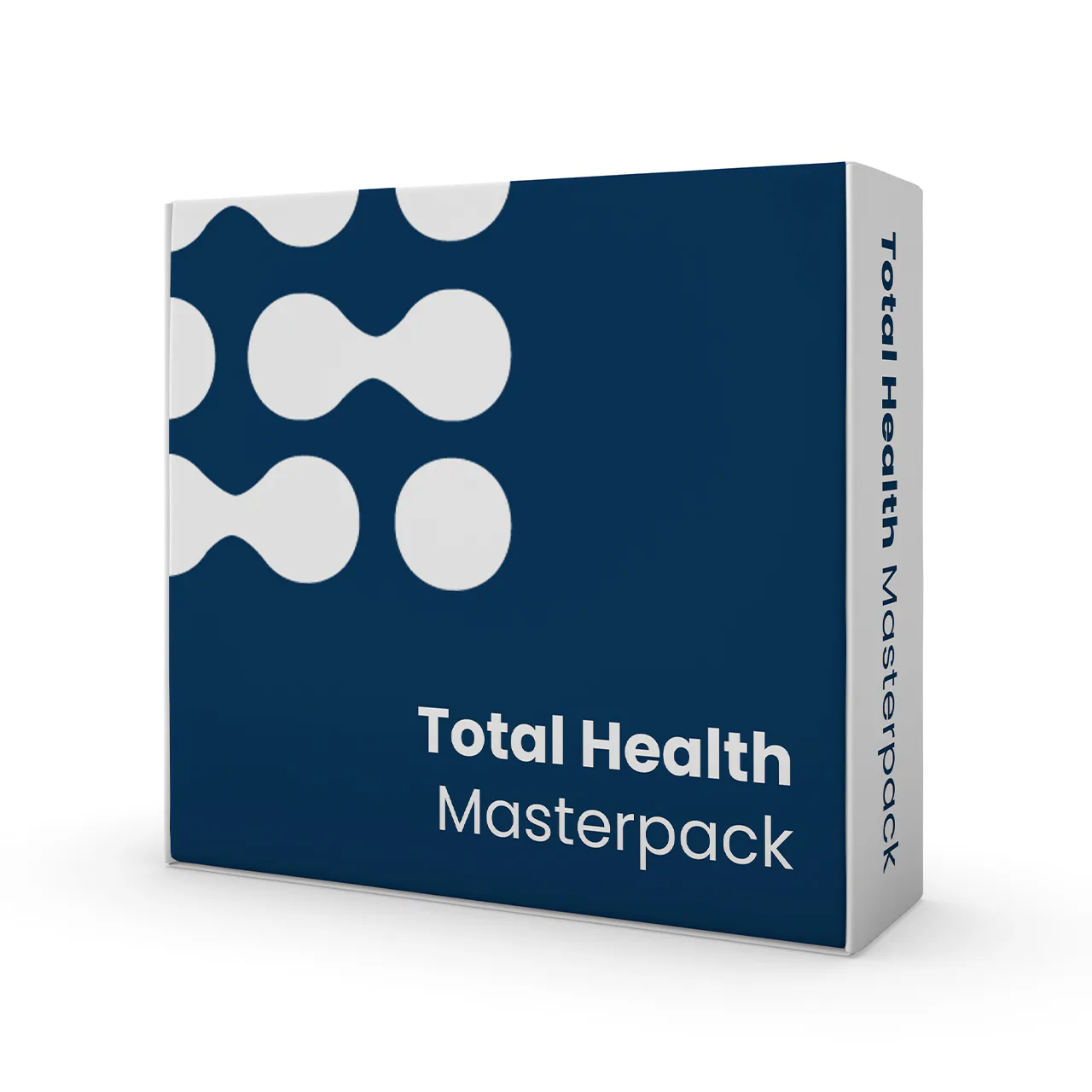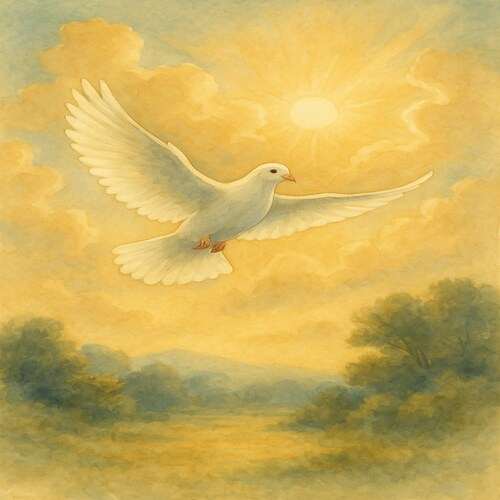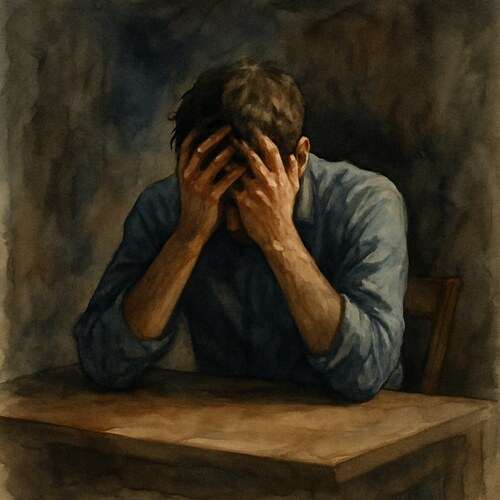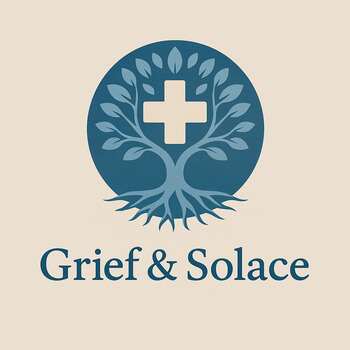Grieving Rosacea: Mourning Confidence Lost to a Face That Burned
Grief with rosacea is quiet but relentless, watching someone hide from mirrors, crowds, and the life they once moved through without fear.
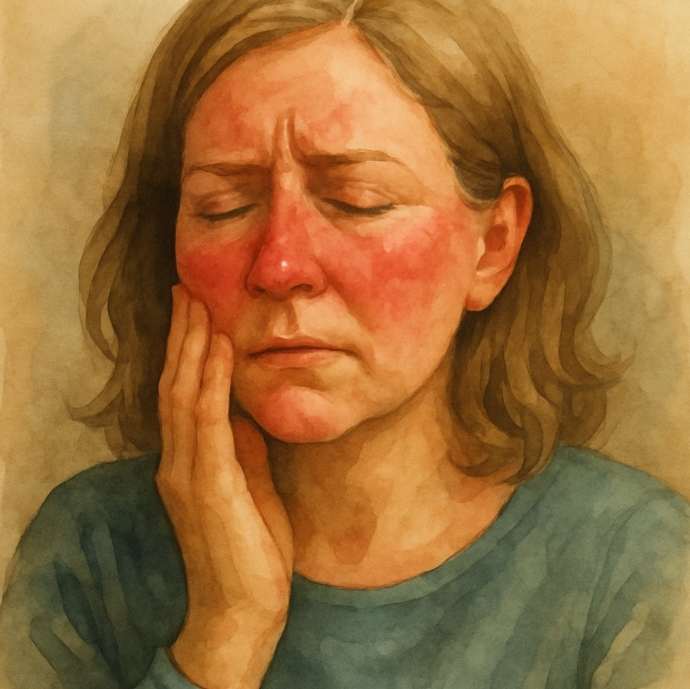
This post blends real grief with grounded knowledge. It isn’t clinical. It isn’t distant. It’s meant to sit beside you—not above you. The story you’ll read is meant to reflect what so many feel when living through or witnessing this condition: confusion, exhaustion, and quiet forms of courage.
If what you read feels familiar, please speak with your doctor. Your pain deserves more than silence.
She Hid Behind Makeup Until She Forgot What It Felt Like to Be Seen
It began with a flush. Just her cheeks—rosy, warm, no big deal. But then it spread, creeping to her nose, her chin, her forehead. The redness was stubborn, refusing to fade away after the moment passed.
She attributed it to stress, convinced her skin was merely “sensitive.” She tried everything: drugstore washes, high-end creams, dietary changes, allergy tests, and avoiding wine, sun, spice, anything that might help. Yet, the flare-ups came like clockwork, and the stares followed her everywhere.
Finally, she sought help from a dermatologist. The diagnosis was Rosacea…chronic, visible, misunderstood. People misidentified it as acne, a rash, or simply poor skincare. They suggested she drink more water, and many complimented her on the flush as if it were an asset.
🧠 Symptoms:
– Facial redness and flushing, initially episodic, becoming persistent
– Visible blood vessels (telangiectasia/spider veins)
– Pimples and bumps resembling acne but usually without blackheads; may contain pus
– Burning, stinging, tender skin—often hot to touch
– Eye irritation: dry, swollen, red eyes or eyelids (ocular rosacea)
– Thickened skin on the nose (rhinophyma), more common in men
– Flare cycles with periods of remission
She laughed along, masking the hurt it caused. But deep down, it stung.
She stopped taking selfies, ceased meeting friends during the day, and began layering concealer over primer over foundation, not out of vanity, but as a shield. Without that layer, she hardly recognized her own face. She couldn’t remember the last time she walked into a room without checking a mirror, multiple times.
And beneath it all? She felt guilty that her grief seemed small. After all, it wasn’t cancer. It wasn’t life-threatening. But it certainly was life-altering.
Dating felt like navigating a minefield. Job interviews resembled exposure therapy. Even compliments turned into a painful reminder, often ending with, “You’re beautiful, even with all that redness.”
Risk Factors:
– Light skin prone to sunburn
– Age 30–50
– Family history
– Smoking
Complications:
– Permanent redness and visible veins
– Rhinophyma (bulbous, thickened nose)
– Chronic eye inflammation risking vision
– Emotional distress and social withdrawal
Her skin flared like fire, but her courage never burned away. Now, she wears her face…not to disappear, but to remain.
Causes:
– Exact cause unknown; likely genetic, immune overactivity, environmental triggers
– Not infectious or caused by poor hygiene
She stopped searching for a cure and instead focused on building a routine: a gentle cleanser, green-tinted moisturizers, and sunscreen treated like sacred duty. Slowly…oh, so slowly…she discovered stillness.
Not in her skin, but in her reflection…
Some days were better, some were worse. She still reached for makeup, but now, it served a different purpose. It was no longer about hiding; it was about honoring her journey.
She had faced her worst self and continued to show up, unwavering.
Common triggers include:
– Sun or wind exposure
– Spicy foods, hot drinks, alcohol
– Temperature extremes
– Stress and emotional upset
– Exercise
– Blood vessel-dilating medications
– Irritating skin or hair products
📘 Diagnosis & Treatment
Alzheimer’s disease is diagnosed through a combination of medical history, cognitive testing, brain imaging, and, more recently, biomarker detection.
Doctors begin with neurological exams and mental status evaluations. They may conduct MRI or CT scans to rule out other conditions and examine brain shrinkage. PET scans can show abnormal amyloid or tau deposits. Blood and cerebrospinal fluid tests can also reveal early biological signs.
Diagnosis often involves a team: primary physicians, neurologists, and sometimes neuropsychologists. Genetic testing is rare but may be considered in early-onset cases with family history.
Treatment has two arms:
Symptom Management and
Disease Progression Control.
Medicines for Symptom Relief:
- Cholinesterase inhibitors (e.g., donepezil, galantamine): modest improvement in memory and behavior
- Memantine: helps with moderate-to-severe cases
Disease-Modifying Treatments:
- Lecanemab (Leqembi) and Donanemab (Kisunla): IV infusions targeting amyloid buildup; can slow decline in early-stage patients. These require MRI monitoring due to rare risks of brain swelling or bleeding.
Supportive care plays a central role:
- Environment adaptation (labels, routines, safety measures)
- Nutrition and hydration
- Regular physical activity (walking, chair exercises)
- Engagement in social or creative tasks (music, crafts, storytelling)
Alternative supplements (e.g., Vitamin E, Omega-3, Curcumin) lack consistent evidence and may interfere with medications.
Caregiver support is vital: professional counseling, support groups, adult day centers, and respite care can ease the burden. Education and emotional preparation are essential for those supporting loved ones through this condition.
I know this is heavy, and I understand that the road ahead may feel like a tangle of loss and unanswered questions. But please hear this: you are not broken because you are hurting; you are not weak because you are afraid. You are living through something real, and survival itself is a kind of grace. You are allowed to struggle, you are allowed to hope, and you are allowed to not have all the answers today. Whatever comes next, you do not face it empty-handed; you carry every moment of love that shaped you, and that will always be enough to keep going.
🎀 Gifts to help With Rosacea
🏥 Everyday Comforts for Everyday Battles
Managing Rosacea often means needing a little extra help.
Sometimes it’s about restoring dignity, ease, or simply getting through the day with less pain.
These carefully chosen tools aren’t just items; they’re small bridges back to living.
This section is about finding practical support, never shame.
Therapy Face Mask – Calm for the Skin That Feels Like It’s Always on Fire
Rosacea flares leave skin red, hot, and painfully reactive. This reusable cold therapy mask helps reduce surface temperature and inflammation fast—providing relief from burning, swelling, and flushing. Molded to the face, gentle on sensitive skin, and easy to chill before bed or after a trigger. For faces that need stillness, not sting.
🌿 Paths to Healing Beyond the Map
Sometimes traditional medicine isn’t enough.
If you’re exploring gentle, alternative options to help with Rosacea,
you might find comfort in plant-based compounds like **CBD or CBG**.
*This section is not medical advice, just a door left open.*
USA Medical Total Health Master Pack – Inner Calm for Skin That Burns From the Inside Out
Rosacea isn’t just a skin condition—it’s tied to immune sensitivity, gut imbalance, and stress flares. This Total Pack combines CBD, calming adaptogens, and immune support to help the body regulate what’s causing the inflammation. It won’t cool the flare instantly. But it may help prevent the next one from lighting up so fast.
Need a Different Path Forward?
Every journey through grief looks different. Choose the next step that speaks to where you are now:
When You're Ready to Start Healing
Healing doesn’t mean forgetting.
It means finding small ways to carry your grief with strength and grace.
These are the stories, tools, and gentle steps to begin walking forward…at your own pace.
When You're Still in the Thick of It
Sometimes healing feels like a lie.
If you’re not ready to move on…if the pain still roars louder than the world wants to hear…this is the place where you’re allowed to feel it.
No sugarcoating. No pretending. Just truth.
When You're Holding on to Who’s Still Here
Grief reminds us to love louder.
If someone you love is still with you, this is your place to celebrate them, honor them, and create new memories while there’s still time.
Joy and sorrow can live side by side.

